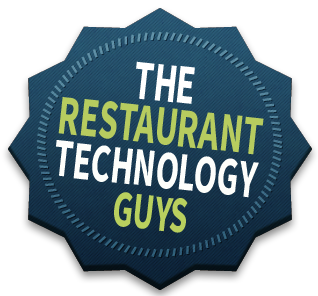
POS systems are becoming smarter, while decreasing costs and increasing revenue for your restaurant. Next-generation solutions ranging from predictive order management software (for projecting demand and reducing waste) to loyalty management programs (wherein guests can manage their own reward accounts), equips restaurants with the tools to be more effective and satisfy the desires of their customers on a more consistent basis.
For example, the NorthStar Order Entry System is the hospitality industry’s first tablet-based multi mode ordering solution. It is the only tablet software that delivers and integrates multiple ordering modes:
NorthStar gives operators to power and ease to edit menus, add items, track actual and forecasted data in real-time, from anywhere. All thanks to their enterprise, cloud-based content management system. You can pull real-time analytical data to help make staffing, ordering and seating decisions on the fly. You and your customers can also rest easy knowing that their personal information is safe with NorthStar’s EMV capability and security encryption capabilities.
With all that NorthStar has to offer, owners can create the exact experience each customer wants with less wait times. Your restaurant could experience up to 30% more table turns, meaning more tips for your waiters and a healthier bottom line.
Which leads us to this fact: 79 percent of restaurant operators believe that advanced technologies are key to not only addressing many of their current challenges, but also to catapulting their businesses to ever-higher levels of operational performance and guest satisfaction on an ongoing basis.
Why are we going over this?
Because, investment in a smart and innovative system will unify front of house, back office and kitchen operations. Specialized software features offer complete command of all areas of the business. Modern POS systems are adept at streamlining a multitude of hospitality operations – from QSR to fine dining. So how do you choose the best for your business? Let’s take a look at the must-have management POS features and their proven benefits.
Customer Relationship Management and Loyalty
What does this feature do? POS systems now connect businesses with your customers on a whole new level. By building your own CRM database you’ll have access to valuable customer data. Built-in features help you manage your email marketing campaigns, customize offers and personalize promotions based on customer behavior.
Why you need it: Turning your attention to customer loyalty is paramount in hospitality – and technology is here to help. Tracking spending habits will help adapt promotions for a seamless omni-channel customer experience. According to Como, developer of white-label loyalty apps, using a customer engagement platform can increase customer spending by up to 41 percent.
Staff and Rota Management
What does this feature do? Hospitality businesses tend to have a high staff turnover so keeping track of your staff is essential. You can do this with ease using a POS system, even across multiple locations. A smart POS system will also give you insights into performance and HR budgets with granular business reports.
Key benefits: Build an organized staff database, set shift patterns, track attendance and send staff notifications – all from one system. The obvious benefits would be increased productivity and better communication with your staff.
Stock Management
What does this feature do? One of the most important tools, but often overlooked, is stock management. This type of POS feature will help you keep one centralized product catalogue. Smart POS systems even allow you to set up management alerts and one-click re-ordering when an item is running low.
Reporting
What does this feature do: A good POS system will give you access to valuable data and reporting tools. To make the most of these, look out for systems with customization and file exporting options to give you the most flexibility. Business reports can be generated for any business data, from sales and marketing to HR and reservations. Many systems now offer access to your business data remotely, via a web portal.
Key benefits: You’ll be able to gain insights into trends and business performance in relation to your goals. Remote access is extremely helpful for business owners and managers who are often required to make fast, but well informed business decisions.
All restaurants should benefit from these great technological innovations, driven by the need to streamline everyday business processes. Businesses that are adaptable and take advantage of the digital power from data insights result in growing sales, customer retention and reduced business costs.
What POS features help your restaurant the most? Be sure to leave a comment on our Facebook and/or Twitter page!
Serious about updating your POS? Check out the Northstar POS system to improve the power and effectiveness of your restaurant!

If you’ve been in the restaurant business for a while, you may think you’re too accustomed to your legacy POS system to make the switch to a new one. You’ve seen your colleagues and competitors upgrade their systems and you’re coming to terms with the truth: a modern POS system can lead to new business, less hassle and greater efficiency for your restaurant. And while the transition may seem daunting, the benefits are likely too good to pass up, especially in such a competitive market.
Through the process, keep in mind these keys to making your POS transition as painless as possible:
By incorporating these best practices into your plan, you can ease your transition to a modern POS platform and take your restaurant into the 21st century.
Step #1 – Ask associates about their experience
Fortunately, there are thousands of restaurants and other businesses that been in the exact same situation. If you’ve been in the industry a while, you likely know other restaurateurs and small business owners who have made the transition to a modern POS system. Ask them about their experiences to get a picture of the challenges you will face throughout the process.
What kind of questions should you ask to get the information you need? Below are a few that should be helpful:
Online reviews are helpful as well, but it is definitely worth taking the time to talk to someone you know so you can ask any specific questions that the internet may not address.
Remember that you are not necessarily trying to find the best POS system money can buy—just the one that will work best for your restaurant.
Step #2 – Involve your staff
Only you can decide what system to implement, but it’s also important that you ask your staff their thoughts.
Your staff is on the frontline and will be using the restaurant POS system as much, if not more than you. So, it makes sense to take into account their needs as well as yours when making your decision.
This process can also serve as a sort of “pre-training” by introducing your staff to some of the important concepts and possible changes they will encounter. If you are considering a major switch, like one from a legacy to a mobile POS, ask them if they have any anxieties or concerns regarding the change.
Then, keep them involved as you weigh the options and begin installing your new system. Continue to brief them on your decisions and ask them for feedback so they never feel left out of the process. The more engaged your employees are throughout the installation of your new POS system, the more comfortable they will be with it when it goes live.
Step #3 – Make a choice
Now that you’ve learned how to research and engage your employees, it is time to determine what features your restaurant needs and, ultimately, what POS system you want to go with.
One of the first questions you need to ask about your next restaurant POS is whether or not you want a mobile system. Mobile point-of-sale systems offer a range of features that can revitalize your restaurant’s preparation and service processes. Consider this option if you are ready for significant changes in the way your restaurant operates.
A mobile POS system enable your servers to take and send orders, charge customers, handle electronic signatures, and show suggested tip options, all from the table. These types of features generate extra efficiency which can lead to improved table turn and better revenue.
However, many restaurants prefer not to implement such a significant change and choose to stick with a stationary POS option. For these businesses, a more modern system can still offer a slew of time-saving features while taking up less space than legacy systems.
While the choice between a mobile and stationary system will be one of the most influential decisions you make, there are some questions that are important to ask:
#1. Does the system track and compile data to help you manage your business?
Most modern POS systems offer much more sophisticated data tracking and business analytics features than legacy systems. Weigh these against your management practices to make a decision that works for you.
#2. Does the interface work with your methods/does it offer significant customization?
Only you and your staff know what works best for your restaurant. You may want to customize your new interface so it resembles your current one to minimize the need for training, or you may want to overhaul your interface to improve efficiency.
#3. Is the system secure?
A digital POS has to be secure, so make sure that your new system is PCI compliant and meets other cybersecurity guidelines so you never experience a hack or other emergency. With plenty of high-profile examples in the past year, you want to keep yourself and your customer’s data safe.
#4. Does the new POS work well with online ordering?
If your restaurant receives a lot of business through online orders, you’ll want to make sure your new system supports that. Some systems can send orders straight to the kitchen from the web, saving a step for your restaurant’s host or cashier. This is an especially useful POS feature for business such as burger joints or pizza parlors.
If you don’t already have several specific requirements in mind for your new POS, these questions will help get you started with the research process. As you learn more about the options, you’ll develop an understanding of your needs so you can choose the right system for your restaurant— and then start the transition.
We hope these tips and questions have been helpful to you as you take the important step of updating your POS!
Serious about updating your POS? Check out the Northstar POS system to improve the power and effectiveness of your restaurant!

The typical restaurant guest has transformed over the last 20 years, from a conservative individual looking to have an enjoyable meal to a demanding and sophisticated foodie seeking a delightful and challenging dining experience. With the rise in expectations of patrons, improving revenues and profitability for restaurants is turning out to be a distinct challenge.
We all know that every hour that a restaurant table sits open is not only an hour of lost revenue but it’s an hour of paid wages and utilities, as well. Technology solution providers, like Northstar POS, can help restaurants properly staff their single or multiple locations based on expected turnout and even help to get more customers through the door on a consistent basis.
In our article today, we are giving you five tips to help increase your number of online reservations!
Tip #1 – Have a reservation button/link on every page.
Getting website or mobile visitors to make a reservation is the whole purpose of your website. Period. Yes, you want to make it easy and fast for visitors to find hours of operations, menus, location and contact information. However, you cannot forget the main purpose of your site: booking online reservations or orders. So, on every page, there should be a reservation link/button. There is debate in the SEO & CRO world whether above or below the fold is best, but you can let the ‘experts’ duke it out. The most important action you can take it putting it on every, single page. We want to make it easy for the user to make a reservation, not difficult.
Tip #2 – Use clear call-to-action text.
Whether on your website, Facebook ad, landing page, Google AdWords, Twitter, Instagram or any other medium, a clear and actionable call-to-action (CTA) is needed. Tell the user what to do next and how to do it. Make it easy.
Ambiguity kills conversions about as fast as a marriage proposal on a first date.
Use ‘Reserve a table now!’, ‘Make a reservation,’ ‘Book a table now!’, anything that makes sense and communicates to the user the next step. Experiment and see what text resonates with your audience.
Tip #3 – Unique pages for each location
NOTE: This tip applies to restaurants with multiple locations. While the services offered at each location might be the same, there could be certain information only relevant to people in that local area. To solve this issue and communicate specific differences, create unique reservation landing pages for each location your restaurant may have. This gives you the opportunity to include local content that speaks directly to that market. For example, showcase the chef, seasonal specials, hours, parking instructions and more. By following this strategy, you can also eliminate the issue of customers making reservations at wrong locations.
Tip #4 – Make your website responsive and mobile-friendly
We have been touting this message for over four years, yet we still come across non-responsive websites. We are about to go into 2019 here people. If you do not have a mobile-friendly website, make that one of your top priorities for your business. You need a presence online and especially on the go.
Tip #5 – Partner with online reservation services
Many people, including ourselves, visit websites like OpenTable, Rezbook, or Zomato Book to make reservations at local restaurants. Most users even visit to do a blanket search of restaurants in their area. By being listed on these sites, a restaurant can capture reservations from people who might otherwise not have known about the restaurant or that it takes reservations online. During certain times of year that restaurant reservations are in high demand, such as Valentine’s Day or Mother’s Day, these types of websites can be paramount in bringing in new customers who will hopefully become frequent, long-term patrons.
These tips may sound simple and intuitive, but you would be amazed at how many restaurants, big and small, miss these curtail details. We hope have found these tips useful. If you already do this, try to do an informal ‘audit’ and see if you digital presence uses these principles. You may be surprised!
Be sure to check out Custom Business Solutions and their Northstar POS system to improve the power and effectiveness of your restaurant!

Technology is an integral part of our daily lives and restaurant owners/operators have definitely taken notice. Because of this, we have seen an interesting trend emerging: smaller restaurants & chains are going all-in on kiosks.
It is surprising, but kind of not at the same time, because having an IT person or department to handle your technology and security is becoming just as crucial as menu development or operations. And this is trend that we do not believe will slow down any time soon. More and more restaurants are designing themselves around tech instead of treating them as digital accessories.
Like in our previous articles about kiosks, even the major players in the space, like McDonalds, are adding more and more digital kiosks. They event found out that customers tend to spend more when using a digital screen.
Let’s take Square Roots Kitchen in Chicago as an example.
The year-old 1,600-square foot startup is outfitted with five, 32-inch wall mounted touchscreen tablets.
There are no cashiers.
Founder Derin Alemli said his business model calls for marrying technology with a simplified back-of-the-house meal assembly system that requires fewer employees.
“We’re a tech-enabled restaurant,” said Alemli, a self-described serial entrepreneur with an MBA from the University of Chicago.
The Square Roots Kitchen touchscreen tablets display large size fonts and eye-popping food images, making it easy and enticing for customers to build their meals.
“We knew we wanted to go big and bold. There’s no ambiguity,” Alemli said.
After ordering, guests can watch their food being prepared by a food assembler standing behind a glass partition. A typical order is ready in less than 90 seconds.
And, that’s the goal: Convenience, speed and personalization without sacrificing food quality. Alemli is happy with the results. He said roughly 90 percent of the restaurant’s revenue comes from returning customers.
So why are restaurants like Square Roots Kitchen doing so well? And, why are orders higher on average?
Customers tend to order more because they have more to customize. They do not feel the pressure of a line behind them or hearing long sighs of an aggravated customer or cashier when taking their time to decide. People can actually scroll, look at options and decide what they truly want.
When did we get to a point at the counter when people cannot take their time? Maybe it is our fault of wanting to go so fast that we are literally pushing revenue out the door for the sake of speed. But this is exactly what kiosks solve: ordering is the customers’ own personal time.
Maybe it’s time that you look at your own customer experience and seriously consider kiosks. Making customers happy and having them return on a regular basis is the core goal of any restaurant.
Curious about how Custom Business Solutions can help your company? Check out their Northstar POS system and its capabilities to power and improve your restaurant!

Your restaurant is first and foremost, a business; and with any business comes cost. For a restaurant, the area that has the highest associated costs is food.
According to a study by the Natural Resources Defense Council, 30 to 40% of all food produced in the U.S. is wasted, which ends up costing approximately $165 billion every year. One of the biggest contributors to the food waste problem is the restaurant industry, and all of that waste can hurt your bottom line. By following these tips and making some small changes in your restaurant, such as taking inventory, changing your food orders, and using your food creatively, you can control the necessary food costs. Making your business more efficient and profitable.
Reducing food costs and waste starts with tracking and monitoring the food coming into your restaurant. Many restaurants order food in bulk shipments, but it can be difficult to use all of that food before it spoils. To reduce spoilage, here are some steps you can take:
#1. Track Your Inventory, Consistently.
By checking your inventory on a regular basis, this can give you an idea of how and at what rate your food is being used or wasted. For example, if you notice that you have arugula or salmon that is going unused and spoiling, change your food order to a lesser amount to reduce the food waste. Conversely, if you’re running out of tomatoes before your dinner service even starts, you need to increase your food order.
#2. Strategize With Your Suppliers.
Once you have an idea of how much food your restaurant uses at a given time, you can work with your suppliers to lower food costs. Research and shop around to see what competing suppliers are willing to offer. If you have a good relationship with your current supplier, ask them for a discount or to match prices with their competitors.
#3. Join a Group Purchasing Organization (GPO).
Join a purchasing group to enjoy lower food costs. Why? Due to the sheer volume of the purchasing power, suppliers often offer lower prices. Group purchasing organizations pool the resources of many small restaurants together to get the best quality goods while keeping costs low. The combined capital of many individual restaurants is significant, which gives the organization considerable leverage when bargaining with suppliers, ensuring that you’re getting a good deal.
#4. Control Portion Sizes.
Controlling the portions of your food is an excellent way to reduce waste. Monitor how much food is being thrown away. If your customers can’t finish a dish consistently, the portion is too big. Use restaurant portion control tools like portion scales and portion spoons to serve the proper amount of food to your customers.
#5. Use the First In, First Out (FIFO) Method.
This tactic is as straightforward as possible: use the first ingredients that you put into your pantries and refrigerators first. This forces you to use the oldest food first, ensures that you’re always stocked with fresh ingredients, and helps prevent food from expiring without being used.
It may sound intuitive but this is one of the simplest and most effective ways to reduce waste. Use labels or sharpies to indicate which ingredients to use first. Trust us, it is a game-changer.
#6. Daily Specials Are Your Best Friend.
Daily specials can be an effective tool for reducing waste in your kitchen. When you notice food that has been in your pantry for a while, come up with a recipe that features or uses that ingredient, and add it to your daily special list. You can also coordinate with your front-of-house staff to encourage customers to try the daily special, allowing you to clear out your stock while also making a profit.
These tips are small individually, but when used together, produce a significant impact on your business and bottom line. Tell us which methods you employ to keep your restaurant lean and efficient!
Curious about how Custom Business Solutions can help your company? Check out their Northstar POS system and its capabilities to power and improve your restaurant!
We have a special treat for you! Our friend Ken Rhie, the CEO of Trumpia, wrote an article for us about how to improve customer service by texting customers. Check it out!
If you missed the previous article Ken wrote for us, click on the link below:
Excellent customer service is pivotal to running a successful restaurant. When you want to communicate with customers more effectively, it’s time to implement a software program that provides texting services for restaurants. Texting allows you to focus on your customer service by communicating in a way that is fast, efficient, and is preferred by customers. When you are trying to find ways to provide cost-effective customer service to your restaurant customers that really works, it’s time to look into text messaging as a way to do so.
The Timing of Your Text Messages is Important
Once you build up subscribers to your text messaging campaign, the timing of your text messages is important. When you run a restaurant, there may be times you are having a slow night. When you have implemented text messaging into your marketing strategy, you can send out a quick text to all of your subscribers offering a four-hour deal to anyone that comes to your restaurant that night. It’s a great way to make customers feel as if they are getting exclusive deals and it will help keep your restaurant full of paying customers. With 90% of text messages opened within three minutes, this is a cost-effective way to reach most of your customers quickly.
Customers Can Be Reached Wherever They Are
Most people carry their cell phones wherever they go, which means you always have access to your subscribers when you want to send a text message. In addition, you can use texting as a way to let customers know their table is ready. This makes waiting for a table more relaxing and convenient, as customers can travel a wider range while waiting to hear from you. If you offer a delivery service, a quick text sent to your customer to let them know that food is on the way is a way to improve your customer satisfaction.
Texting Is Interactive
When you want to open up a line of communication between you and your customers, texting is perfect. Texting isn’t simply a one-way communication. You can allow customers to send you a text to ask questions, order takeout, or to sign up for a reservation. When you provide this easy way of communication to your customers, you will save money because employees won’t be spending their valuable time answering the phone all the time. Customers who know that you are answering their questions quickly will begin to become loyal to your business. Share news and new specials through text messaging, and allow customers to respond to the news or offer suggestions.
Know What Your Customer Want
One of the best uses of text messaging to improve customer service is to send out quick polls or surveys to your customers to find out what their opinions are. Whether you want to know if customers like a new menu item, or you are considering different operating hours, asking the opinion of your customers can help you make a more informed decision. When you are looking for feedback through text messaging, keep it simple.
For improved customer service, implement a text messaging platform. You will be able to send out immediate deals to customers, and gain valuable feedback quickly. Text messaging opens up a form of communication that your customers will appreciate.
Author Biography:
Ken Rhie
Ken Rhie is the CEO of Trumpia, which earned a reputation as the most complete SMS solution including user-friendly user interface and API for mobile engagement, Smart Targeting, advanced automation, enterprise, and cross-channel features for both mass texting and landline texting use cases. Mr. Rhie holds an MBA degree from Harvard Business School. He has over 30 years of experience in the software, internet, and mobile communications industries.
